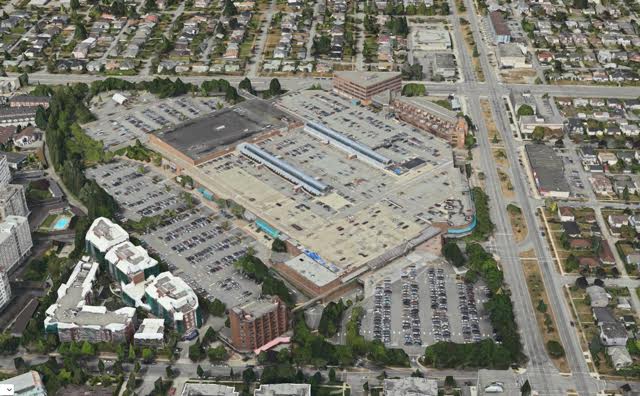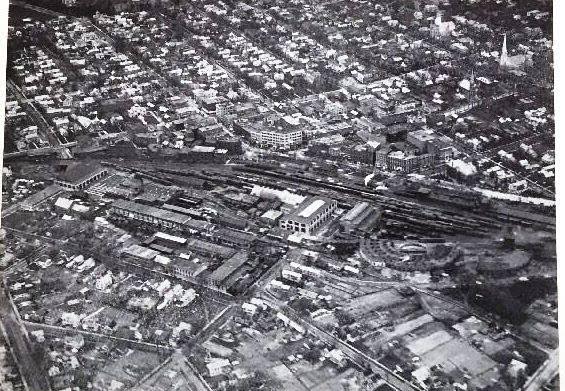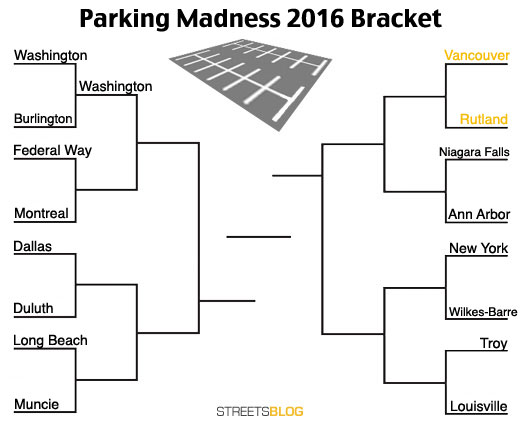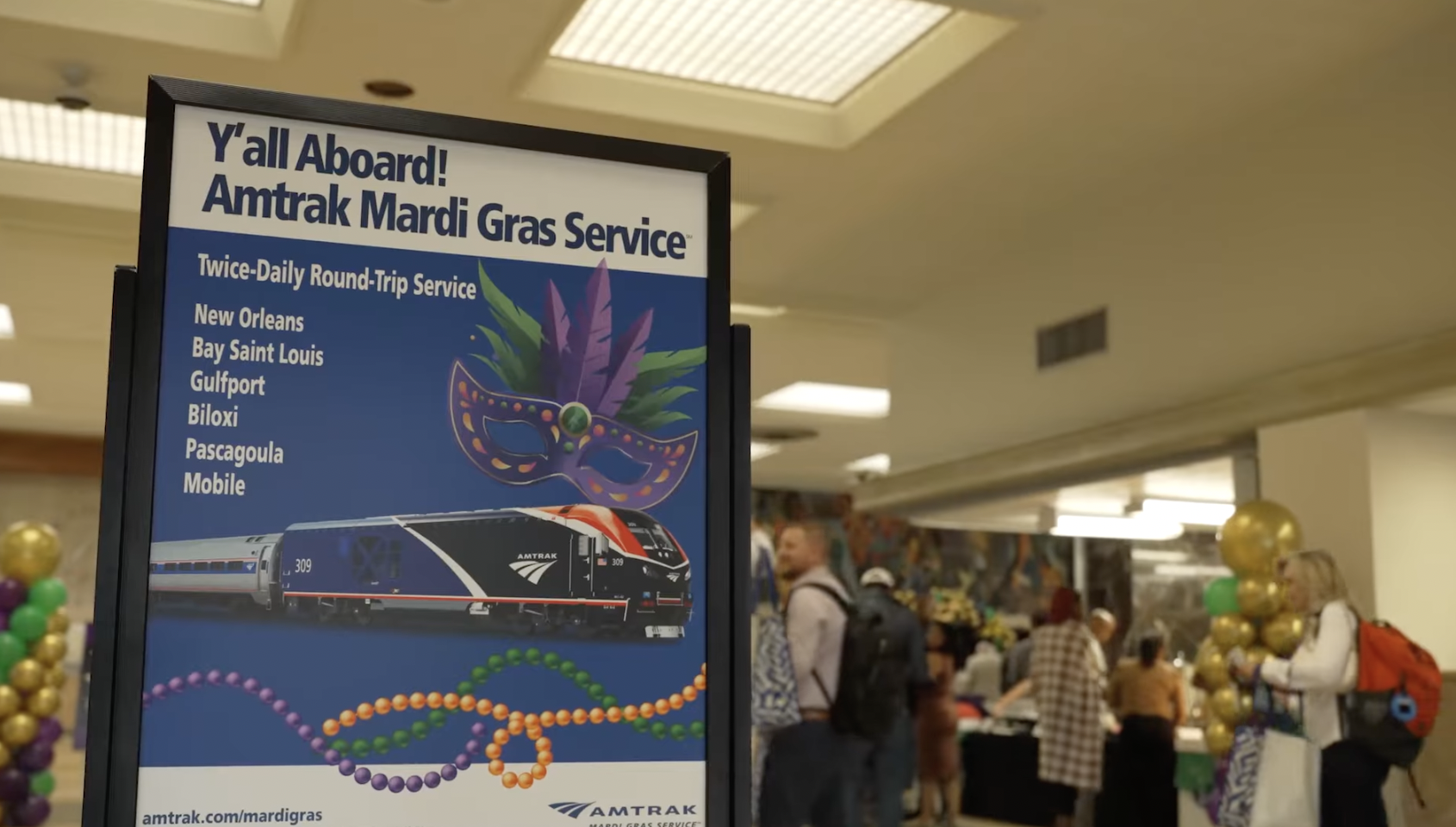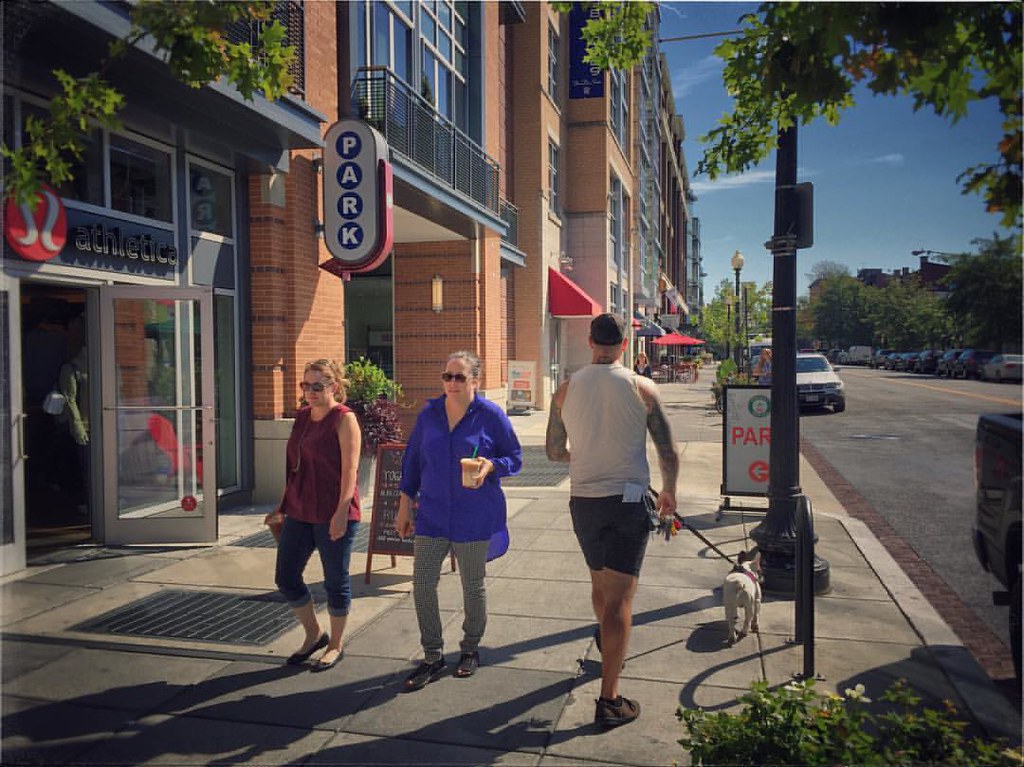Welcome to day two of the 2016 Parking Madness tournament. Yesterday, the assortment of surface parking between the Capitol and Union Station in Washington crushed the parking lots that greet people entering downtown Burlington, Vermont.
Today pits "Vancouver's upscale shopping mall" against the parking crater by the train station in "Vermont's second city," Rutland.
Vancouver, BC
The parking crater around the Oakridge Center Mall was submitted by Jens von Bergmann. He writes:
While it’s certainly lacking in scale and waste compared to others in North America, it more than makes up for that by revealing the potential of what it could be. The site was recently approved for a massive redevelopment, featuring...
- Doubling the size of the mall to 1.4 million square feet
- 2,916 residential units
- 300,000 square feet of new office space
- A 70,000-square-foot civic centre (community centre, library, seniors centre and childcare space)
- Rooftop open space
So this parking crater probably won't last much longer, but if anything, all this development slated for the site shows how it's gone to waste until now.
The next competitor is in a very different situation.
Rutland, Vermont
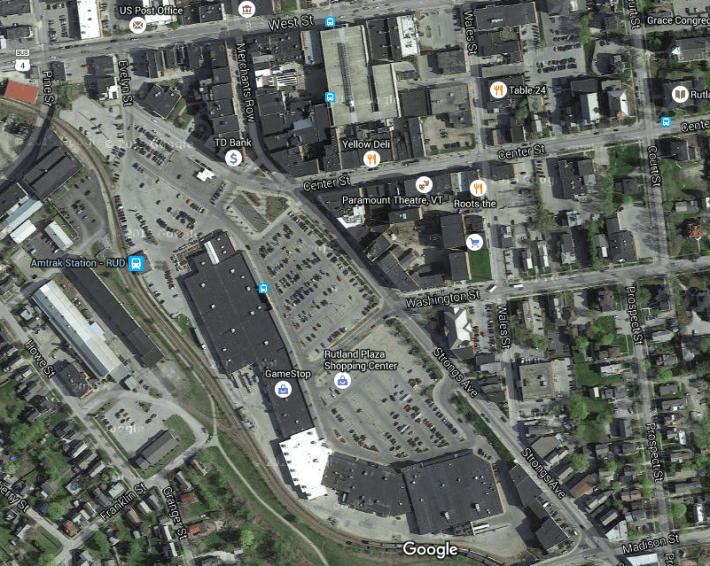
The site around Rutland's Amtrak stop used to be integrated with a walkable downtown, but now it's a Walmart and a parking lot. Submitter Andrew Fusco writes that Rutland's story is one of industrial decline:
Rutland has a rich history of marble extraction, and by the turn of the last century Rutland was exporting more marble than anywhere else in the world for a brief time. All of this industrial output needed to be moved, and the railroads helped Rutland become one of New England's leading transportation hubs. The dense, busy railroad depot made downtown a bustling place where industry and culture came together. Many of Rutland's finest buildings were constructed at the turn of the century, and by 1920 Rutland boasted a network of streetcars, with daily train service to Boston, New York, and Montreal.
The urban fabric of Rutland changed drastically in the 1950s. The Rutland Railroad declined and by 1953, passenger service on the line was cut. By 1963, the line was shut down entirely. By this time, the depot downtown had been replaced with a shopping plaza.
In 2015, the rail depot has been replaced with a parking lot. Gone is the train station, in its place is a rare example of an urban Walmart.
Fusco also sent in this aerial view of Rutland from 1923, when today's Walmart was "a hub of industrial activity that boasted a central train station with daily departures and arrivals to various other hubs in the region."
So two craters, two cities, on opposite trajectories.
Your vote determines which one advances to the round of eight.
